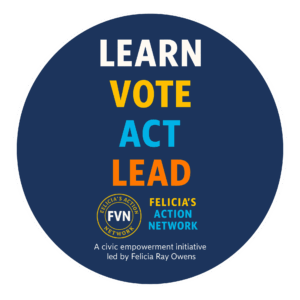
We Have to Pass the Bill So You Can Find Out What to Regret
June 5, 2025
Matt Yglesias: Elon’s Smash and Grab
June 5, 2025 Max Chandler-Mather
Well, we’re certainly not going to take advice from a political commentariat who would rather the Greens disappear altogether.
I think the first question is: How do we build a political movement that can withstand the sort of rip tides that influenced this election? I don’t just mean the enormous establishment mobilization against us, but also the contingent impacts of Trumpism, also a massive factor in the Canadian election, the collapse of the Liberal vote, and the consolidation of wealthier middle-class voters behind Labor.
The second question is whether it’s possible to build a broad coalition between renters and multicultural working-class people on the one hand, and progressive middle-class voters on the other. Some are arguing it’s not, but I disagree. To make change, it’s necessary to put together an alliance of different social groups, founded on a set of common interests. This requires a coherent political platform with material offerings that speak to both groups, broadly defined. The breakthroughs we have made in Queensland were thanks to this approach. And frankly, we aren’t winning more Lower House seats unless we can stitch together this kind of coalition.
In terms of what we can offer right now, I think a big part of it will be thanks to extraparliamentary, local organizing. In metropolitan Brisbane for instance, we still have the volunteer capacity — and, if we push, the financial resources — to run regular community meals, free family fun days, climate disaster response teams, and support networks. These initiatives can fill gaps in the lives of both renters and middle-class people. Given the experience of urban and outer-suburban life is increasingly isolated and alienated, it can be very powerful to offer both financial support and meaningful, enjoyable community engagement.
Beyond that, there are questions about the kind of extraparliamentary institutions, movements, and groups we need to build. From a structural, economic perspective, we know that the number of renters is going to keep growing and house prices will keep going up as a result of a housing system neither major party wants to touch. It’s this growing class of renters that also represent the fastest growing and most active part of the Greens volunteer and organizer base. So, how do we help foster genuine organizing among renters, to help them become self-empowered and to act collectively in their own interests?
The housing crisis is creating the basis for that kind of organizing, and for building a broader voting coalition. Although many middle-class people are not directly impacted by the housing crisis, their kids and grandkids are. Moreover, private developer–led urban development has seen Australian cities increasingly dominated by expensive, poorly built apartments or urban sprawl, without the public parks, community spaces, schools, and public transport that help people build good, meaningful lives.
Greens housing policy, by contrast, advocates for public and community-led, Viennese-style development, centered around beautifully designed, genuinely affordable medium-density apartments. Combined with expansive investment in public parks, community spaces. and public transport, it’s a vision that stands to benefit both middle-class homeowners as well as renters. Indeed, this style of “right to the city” politics was integral to the early growth of the Queensland Greens.
Beyond that, lower-income workers, renters and more middle-class, progressive voters also share an interest in tackling climate change. And importantly, this stands in direct conflict with the coal, oil, and gas industry, as well as their political wing, the Labor Party.
Also, privatized electricity, childcare, and aged-care systems are placing a real financial burden on a wide cross-section of Australian society, as well as an emotional burden, in the cases of childcare and aged care. At the same time, the share of GDP going to wages is at a record low, while the share going to profits is at a record high. And, to be honest, wages aren’t even that reliable a determinant of how wealthy you are, given the growth of asset inequality.
Growing inequality also harms communities. This can spur social concern among middle-class people, especially in suburbs where many renters also live. Interestingly enough, this is reflected in the Greens vote, which is often strongest in areas where there’s a greater disparity between the lowest and highest income earners. I think that tells us there’s a layer of better-off people who will vote for a political platform that materially lessens inequality.
Lastly, the establishment isn’t necessarily as strong as it seems. Despite Labor’s record parliamentary majority, it was their fourth-lowest primary vote in since World War II. That reflects declining trade union membership and the long-term hollowing out of the Labor Party — their support is a mile wide but an inch thick.
Given this context, the Greens have a lot to offer in the short to medium term. I still think it’s entirely possible to build a movement that both retains the inner-city electorates and grows in outer-suburban areas. I think both focuses are necessary, because if we want to see a Greens government, we need to hold on to seats like Melbourne or Griffith just as much as we need to win seats like Fraser, or Moreton.
Great Job Max Chandler-Mather & the Team @ Jacobin Source link for sharing this story.








